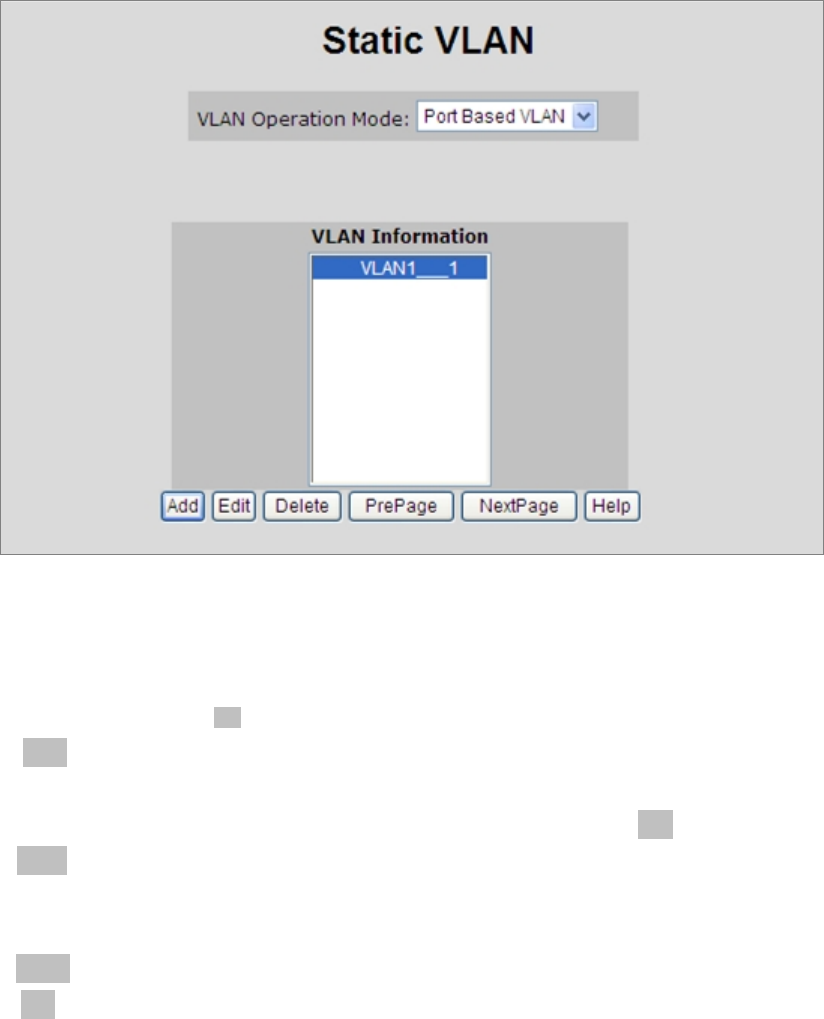
User’s Manual of FGSW-2620VM / FGSW-2620PVM
63
4.4.3 Port-based VLAN
Packets can go among only members of the same VLAN group. Note all unselected ports are treated as belonging to
another single VLAN. If the port-based VLAN enabled, the VLAN-tagging is ignored.
In order for an end station to send packets to different VLANs, it itself has to be either capable of tagging packets it sends
with VLAN tags or attached to a VLAN-aware bridge that is capable of classifying and tagging the packet with different
VLAN ID based on not only default PVID but also other information about the packet, such as the protocol.
Figure 4-4-2: Port-based VLAN interface
Create a VLAN and add member ports to it
1. Click the hyperlink "VLAN” \ “Static VLAN" to enter the VLAN configuration interface.
2. Select “Port Based VLAN” at the VLAN Operation Mode, to enable the port-based VLAN function.
3. Click “ Add “ to create a new VLAN group. Then the following Figure 4-4-3 appears.
4. Type a name and Group ID for the new VLAN, the available range is 2-4094.
5. From the Available ports box, select ports to add to the Managed Switch and click Add .
6. Click Apply.
7. You will see the VLAN Group displays.
8. If the port-based VLAN groups list over one page, please click “Next Page” to view other VLAN groups on other page.
9. Use “Delete” button to delete unwanted port-based VLAN groups
10. Use “ Edit” button to modify existing port-based VLAN groups.
By adding ports to the VLAN you have created one port-based VLAN group completely.


















